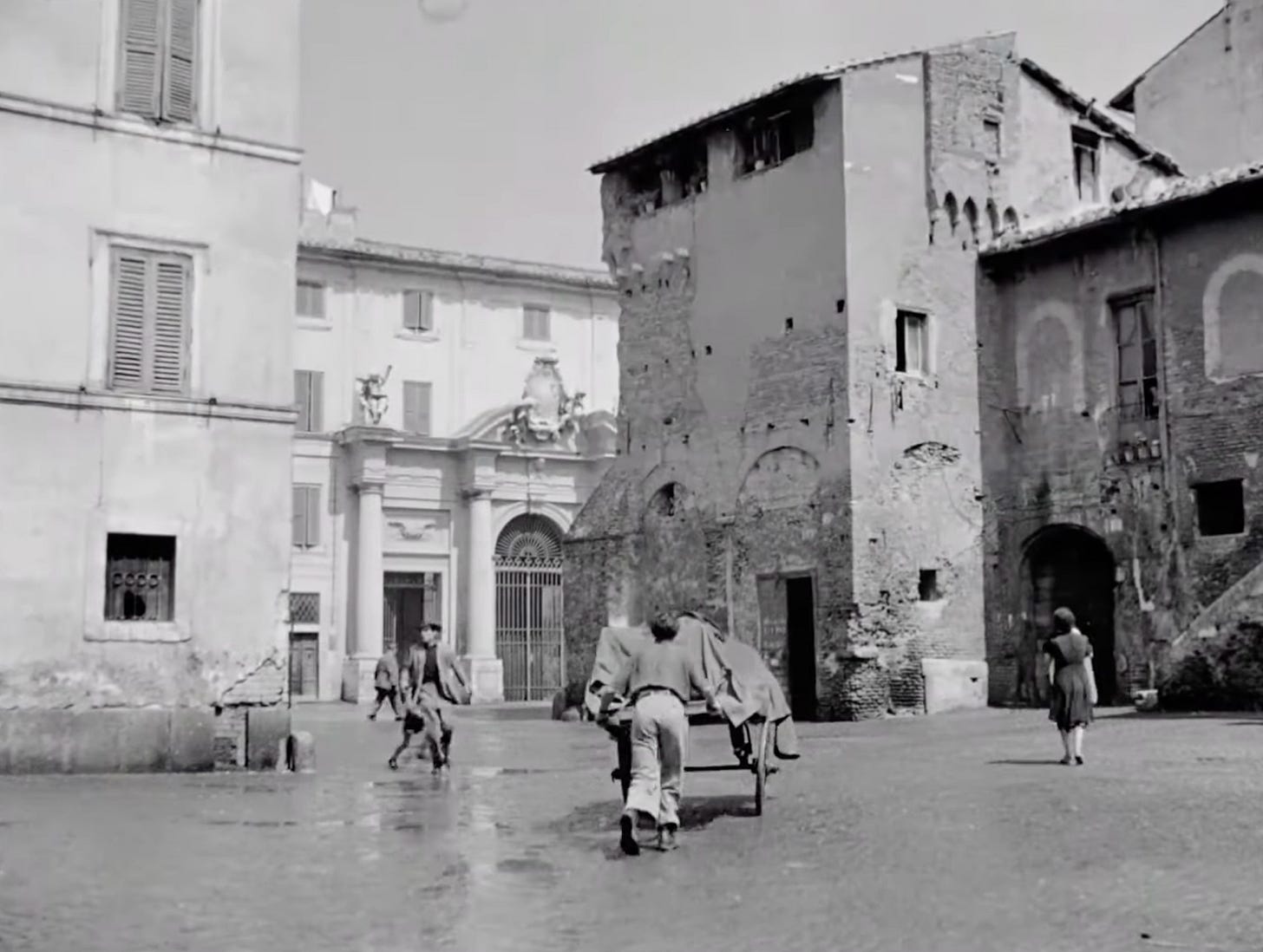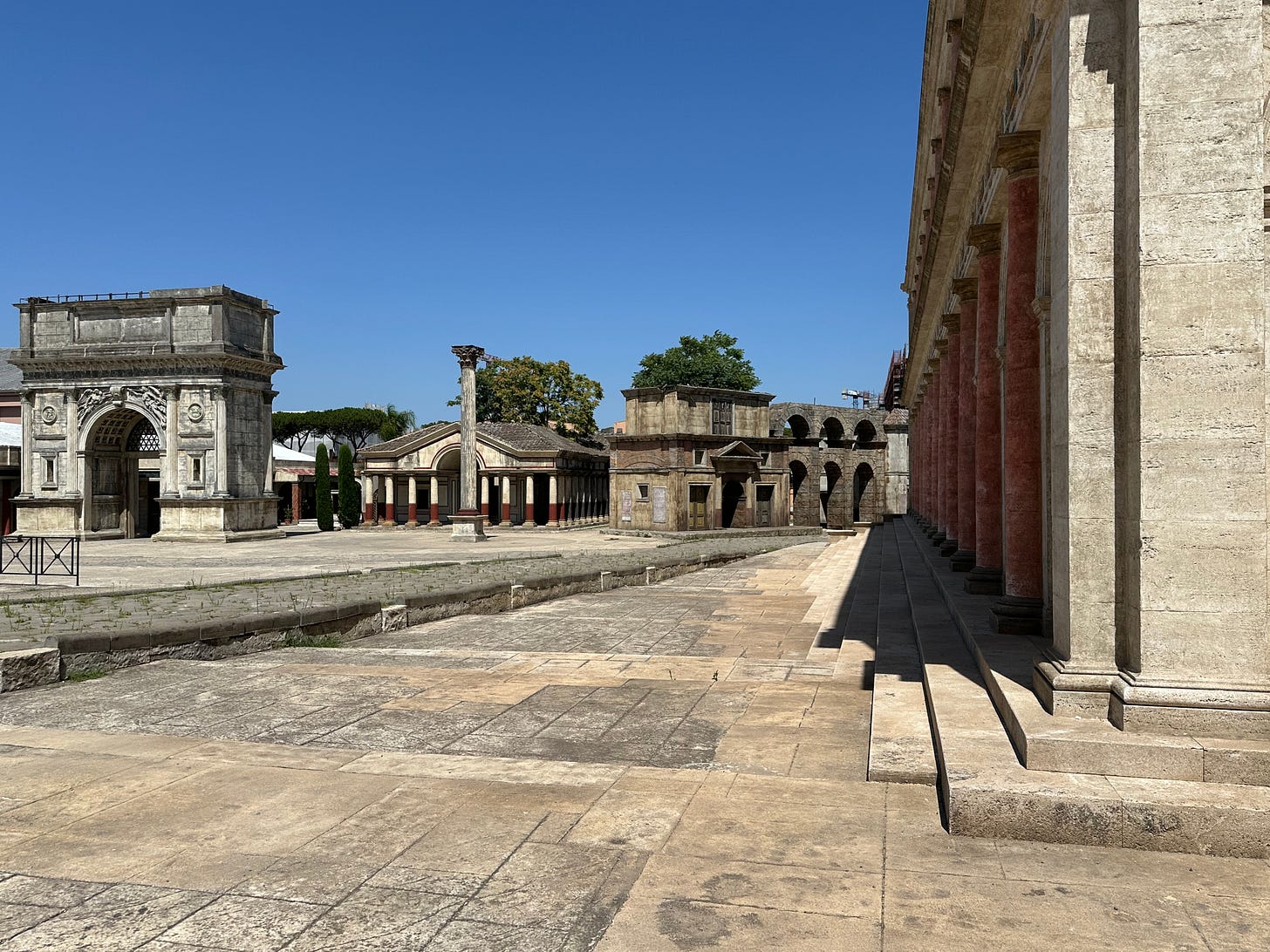Last week I took Bellini Travel clients with a specific interest in cinema on a couple of movie-related jaunts. We first spoke of Cabiria (Pastrone, 1914) and the birth of the historical epic before looking at the origins of Italian neo-realist cinema and visiting locations which featured in Rossellini’s Roma Città Aperta (1945), comparing modern views with stills from the film.
While in Pigneto we found the house of the eponymous Accattone (Pasolini, 1961) and our way back into the centre of town visited the Scala Santa which features in La Grande Bellezza (Sorrentino, 2013). Other movies which got a mention included Ladri di Biciclette (De Sica, 1947), Roma (Fellini, 1972), La Dolce Vita (Fellini, 1960), Roman Holiday (Wyler, 1953), Una Giornata Particolare (Scola, 1977), Il Pranzo di Ferragosto (Di Gregorio, 2008), Caro Diario (Moretti, 1992), and—one of my favourites—Sacro GRA (Rosi, 2013). An eclectic mix.

The next day we made a foray to Cinecittà Studios for a private visit. There we spoke of Mussolini’s shrewd appropriation of the new medium of cinema, and of Scipione l’Africano (Gallone, 1937) the first Cinecittà production which, like Cabiria (screenplay by D’Annunzio), used the tales of the defeat of Hannibal to evoke the triumphalist spirit of Romanitas.
Keep reading with a 7-day free trial
Subscribe to Understanding Rome's Newsletter to keep reading this post and get 7 days of free access to the full post archives.




